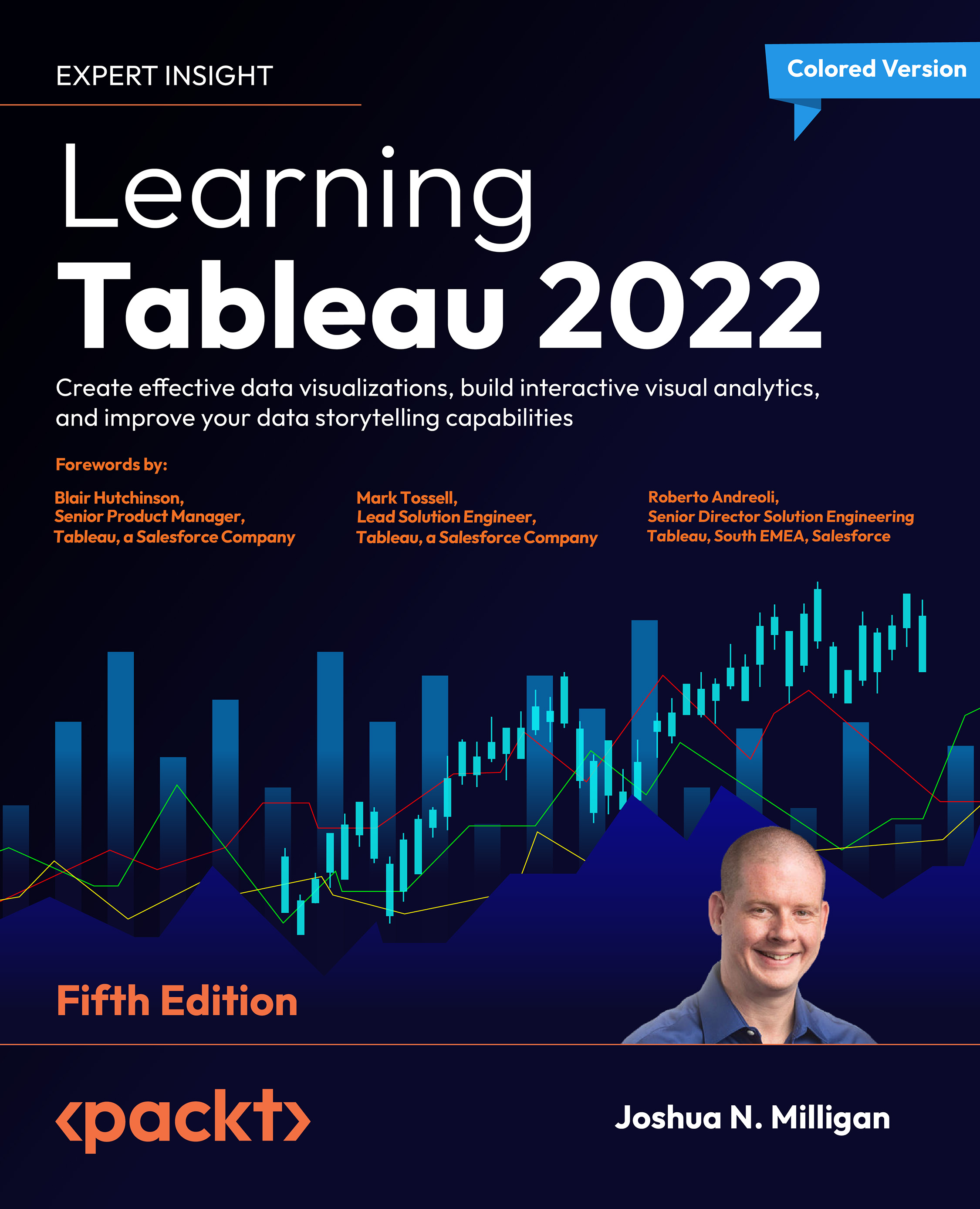-
Book Overview & Buying

-
Table Of Contents

Learning Tableau 2022 - Fifth Edition
By :

Learning Tableau 2022
By:
Overview of this book
Learning Tableau 2022 helps you get started with Tableau and data visualization, but it does more than just cover the basic principles. It helps you understand how to analyze and communicate data visually, and articulate data stories using advanced features.
This new edition is updated with Tableau’s latest features, such as dashboard extensions, Explain Data, and integration with CRM Analytics (Einstein Analytics), which will help you harness the full potential of artificial intelligence (AI) and predictive modeling in Tableau.
After an exploration of the core principles, this book will teach you how to use table and level of detail calculations to extend and alter default visualizations, build interactive dashboards, and master the art of telling stories with data.
You’ll learn about visual statistical analytics and create different types of static and animated visualizations and dashboards for rich user experiences. We then move on to interlinking different data sources with Tableau’s Data Model capabilities, along with maps and geospatial visualization. You will further use Tableau Prep Builder’s ability to efficiently clean and structure data.
By the end of this book, you will be proficient in implementing the powerful features of Tableau 2022 to improve the business intelligence insights you can extract from your data.
Table of Contents (20 chapters)
Preface
 Free Chapter
Free Chapter
Taking Off with Tableau
Connecting to Data in Tableau
Moving Beyond Basic Visualizations
Starting an Adventure with Calculations and Parameters
Leveraging Level of Detail Calculations
Diving Deep with Table Calculations
Making Visualizations that Look Great and Work Well
Telling a Data Story with Dashboards
Visual Analytics: Trends, Clustering, Distributions, and Forecasting
Advanced Visualizations
Dynamic Dashboards
Exploring Mapping and Advanced Geospatial Features
Integrating Advanced Features: Extensions, Scripts, and AI
Understanding the Tableau Data Model, Joins, and Blends
Structuring Messy Data to Work Well in Tableau
Taming Data with Tableau Prep
Sharing Your Data Story
Other Books You May Enjoy
Index
